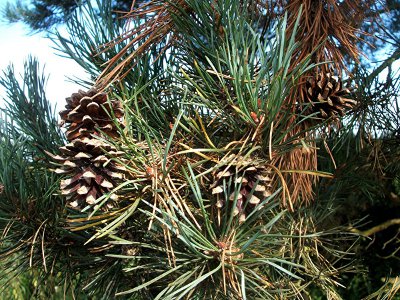Scots Pine (Pinus sylvestris)
Category: Evergreen Trees

Scots Pine is a variety of pine tree that hails from Asia and Europe. As the biggest and longest-surviving tree in the Caledonian woods, the Scots Pine tree is a keystone variety of trees in the bionetwork, and structuring the backbone on which several other varieties depend. The Scots Pine tree is strange among conifer varieties in having many dissimilar mature growth forms, ranging from high and straight-trunked with only some side branches, to wide, distribution trees with many trunks. Young Scot pine trees show the typically pointed shape of conifers, but while the trees are fully grown-up, this provides way to the even-topped or circular-topped forms, which are distinctive of the pine trees in the antique Caledonian Forest leftovers.
Features
The Scots Pine tree is capable of growing to a maximum height of 36 meters, with the usual maximum girth of 2.4 meters at breast height. The bark of the tree is also fairly variable, with the juvenile bark on small boughs being papery skinny and often found with orange-red color. The bark on the stem of a matured tree may differ in color that ranges from grey to reddish-tan and forms layered flakes with the maximum thickness of 5 cm, with profound fissures in between.
The leaves of the Scots Pine tree are quite small and they are blue-green in color with the length, ranging from 2.5 cm to 5 cm, with the breadth between 1 mm and 2 mm. The mixture of orange-red colored bark and the color of the leaves make the tree identified easily.
The tree produces flowers in May such that the female and male flowers blossom on the same tree. The pollination is through wind, and the fertilized female flowers of the tree take two years to turn out to be a completely-grown cone.
The seeds of the Scots Pine tree are usually carried to the extent that ranges from 50 meters to 100 meters from the blood relation tree.
Uses
The Scots Pine tree is a significant tree in forestry. The wood of the tree is used for pulp and sawn wood products. A sapling stand can be formed by sowing, planting or natural regeneration. In some countries the Scots Pine is used to make tar.
The lifespan of the Scots Pine tree ranges from 150 years to 300 years.

 Back To Category Evergreen Trees
Back To Category Evergreen Trees